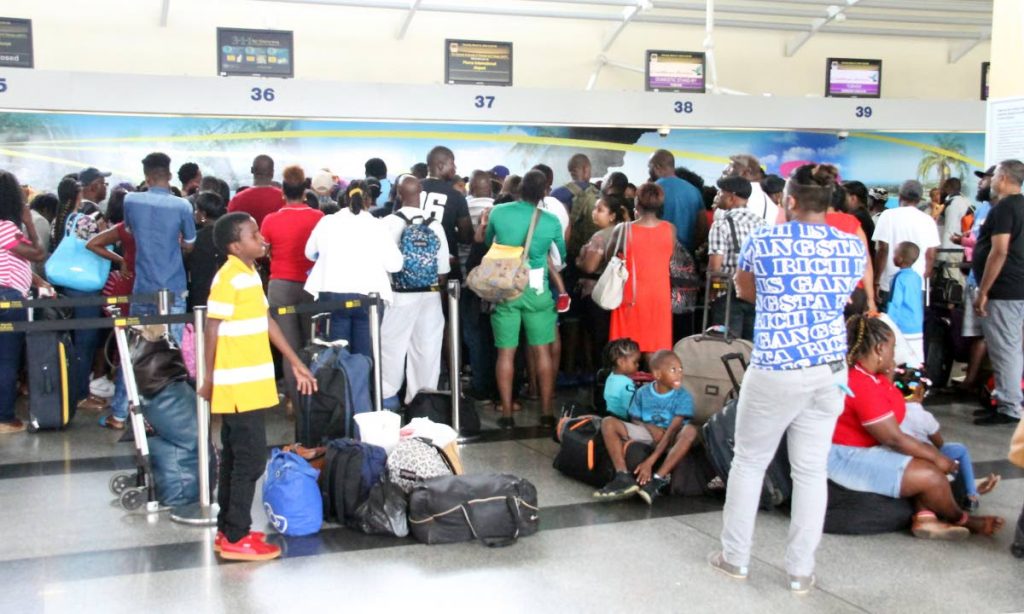$5M for Liat flights to Tobago

The wet lease between Caribbean Airlines Ltd and Liat will likely end up costing the state carrier US$800,000 (TT$5.4 million), chief executive officer Garvin Medera has said.
This will include the initial US$561,000 lease agreement, and “additional costs” for running the service during its March 19 to April 30 run, including the peak Easter holidays, intended to supplement the sea bridge, which is currently without any reliable passenger service. The wet lease arrangement is directly with CAL, Medera told Sunday Newsday in an interview Wednesday at the airline’s head office in Piarco. The company signed off in it, with an understanding from the Ministry of Finance (its line ministry) that CAL will facilitate the lease on Government’s behalf.

“We have confirmation from them that they will be managing the payment for the lease, but we did the contract. They didn’t forward any cash. We paid for it and they will reimburse us,” Medera said. It’s an Aircraft-Crew-Maintenance-Insurance (ACMI) agreement, he said, a standard airline arrangement in which one airline (the lessor) provides ACMI to the other (the lessee), which then pays for the hours operated.
“The cost is US$561,000 and other fees that are conditional on the actual expenses incurred over the period March 19 to April 30. So we estimate $561,000, plus those fees in total. Maybe over US$800,000,” Medera said.
Finance Minister Colm Imbert had initially told Parliament that the cost of the lease would have been US$560,000 (TT$3.9 million)— but did not mention possible extra costs. Imbert has also noted that the cost of the ferry service is TT$10 million per month, so Government would actually be saving money on the lease.
CAL has been under pressure to supplement the downed sea bridge, since Carnival, when the Port Authority initially contracted the airline to supplement its passengers while rough seas and repairs grounded the TT Express. Medera said he believed the airline had been handling the extra capacity with aplomb, even as the accommodation forced the operations team to juggle its entire flight network, since its jets had to be redirected to facilitate the increased passenger load.
“We had to put on jets (Boeing 737s) because the capacity on ATRs are 68 passengers. A jet is 154 passengers. On some days, we had 700 port passengers coming to the airport. That’s in addition to our passengers. On international flights, for example, before the flight went out, we’d do a Tobago rotation and when the flight came in, do another Tobago rotation. It’s really done in a complementary way to the existing flights we have on the network,” Medera said. They’ve also had to rotate the crew, as well as call out employees for extra shifts, but he declined to say what the overtime cost to the airline was.
There was disruption to the schedule, he said, but it was minimal–perhaps an hour—but ultimately the scheduling was done so any free time that the airline had could have been allocated to the air bridge. The on-time performance (within 15 minutes), he added, was 85 per cent.
For the first quarter of 2018, Medera said, CAL offered 265,000 seats and transported 238,000 passengers. In March, it offered just under 93,000 seats, and transported just under 83,000 people. “That’s 10,000 seats people didn’t travel on,” he said, acknowledging reports of long lines and long waits at both the Piarco and ANR Robinson international airports.
Those he attributed to two main things—the capacity of the airports to hold that many passengers at one time, and the natural influx of people travelling during peak times. “People want to travel on a Friday evening from Trinidad and return from Tobago on a Sunday evening. We have the capacity yes, but maybe not all the capacity at peak time. What I would say is that for January, February and March we supported all the passengers there to be transported—even with the extra passengers from the port,” he said.
The airline’s core schedule is 40 flights per day, 20 each way, with additional capacity during peak travel events, like Carnival, Easter and the Tobago Jazz Experience. The Liat wet lease will also add 27,000 extra seats.


Comments
"$5M for Liat flights to Tobago"